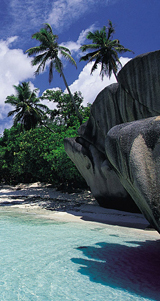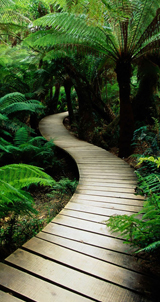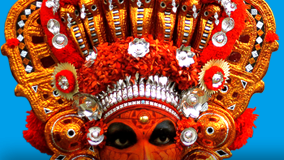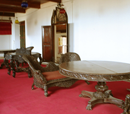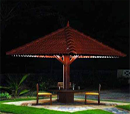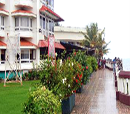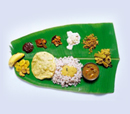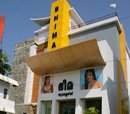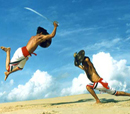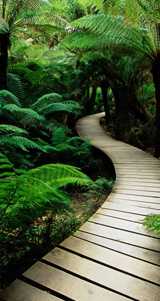

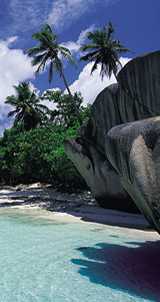
‘Mango Fest’ held in Kannur from May 10 to 15 under the AEGIS of the Agricultural Department, Krishi Vigyan Kendra and Kisan, an environmental organisation.
The organisers said at a press conference here on Tuesday that Rural Development Minister K.C. Joseph would inaugurate ‘Mango Fest’ at the Kannur Municipal High School here on May 10. A painting competition would be held at the school on May 9 in connection with the festival.Different varieties of mangoes from the State and other parts of the country would be available at the venue.
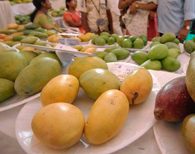
Food products made of jackfruit would also be available, they said. There would be a presentation on mango culture at the venue on May 13. A mango eating competition and a quiz would also be held. Rare mango varieties would also be on display, they added.
Organising committee chairman T.O. Mohanan, Agricultural Department Assistant Director A. Savithri and ‘Kisan’ secretary M. Rathnakumar were present at the press conference.
The five-day festival, being organised by the District Tourism Promotion Council and Tourism Department to showcase the history and culture of the district, has been planned to display the cultural tapestry of the region and its contribution to the polity, economy, art and culture of the State.
The event was part of the cultural fete aimed at showcasing the history and tradition of Kannur.
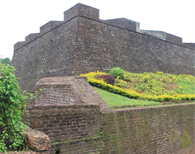
Nearly 300 children participated inside the Portuguese-built fort. The competitions were conducted in separate categories for lower primary, upper primary, high school and higher secondary section.
Kottiyoor Shiva Temple located at Kottiyoor, is one of the a famous Lord Shiva temple of North Malabar. This temple is located approximately 50 km From Kottayam Malabar. This Shiva Temple also known as the Kaasi of South (Dakshina Kaasi). This is a famous pilgrim centre devoted to Lord Shiva and Goddess Parvati. The actual name of this temple is Sree Kottiyoor Mahadeva Kshetram. According to the Puranas, it is believed to be the location of the famous Yagna of Daksha, also called the Daksha Yagna or the Dakshayaagam.
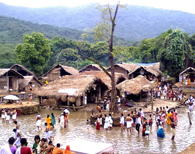
At Kottiyoor, there are two temples - Akkare Kottiyur and Ikkare Kottiyur, located on the opposite banks of river Bavali.
The temple festival (utsav) begins every year by mid-May and lasts for 28 days. Ilaneer Veppu or submitting tender coconuts before the deity is an important ritual during the festival. Thousands of tender coconuts brought by hundreds of devotees from different parts of Malabar is submitted on a special day. The very next day is Ilaneerattam. On this day, the main priest pours coconut water collected from the tender coconuts on the idol.Kottiyoor temple is located near Kelakam. Sri Kottiyoor temple attracts lakhs of devotees every year during the "Vaisakha Maholsavam" celebrations.
Theyyam or Theyyatom is one of the most outstanding and popular ritual art of northern Kerala particularly now found in the traditional Kolathunadu of the present Kannur and Kasargod District. As a living cult with centuries old traditions, rituals and customs, it embraces almost all castes and classes of Hindu religion. The term theyyam is a corrupt form of Dhaivam or God. It is a rare combination of dance and music and reflects important features of a tribal culture. The indigenous Theyyam cult under the influence of the great classical Indian tradition incorporated new ideals and legends.
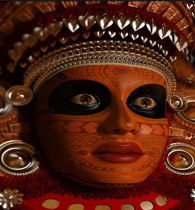
However its form and content did not change very much. The popular folk religion based on Theyyam was influenced by the Brahmanical settlements in Kolathunadu like Payyannur and Taliparamba. According to Keralolpathi, a famous historical book, Parasu Rama sanctioned the festival like Kaliyattam to the people of Kerala. Kaliyattam means Theyyattam or Daivattam, which lasts for 3 to 11 days. He assigned the responsibility of Theyyam dance to the indigenous communities like Panan, Velan, Vannan and Malayan. Velan one of the Theyyam dancers are referred to in the sangam literature. According to sangam traditions, he was employed by the mothers of love born girls to exercise the malignant spirits from their daughters. All rituals described in the sangam works and their commentaries are being observed by Velan and other dancing communities. Ezhimalai, described in the sangam literature, ruled by Udayan Venmon Nannan , is situated in Kolathunadu near Payyannur. Therefore the Tamil sangam culture with variations still continue in this region. The dance of Velan community had taken new forms and developed in to the present day cult of Theyyam over a period of 1500 years. This uninterrupted continuity of sangam traditions makes theyyam a prominent religious system of north Kerala. As a religious and social institution, it has significant place in the cultural history of the region. Under the impact of Aryans the cult of Theyyam had changed substantially incorporating new trends and sub cults along with its tribal character. In short it can be stated that all prominent characteristics of primitive tribal religious worship had widened the stream of Theyyam cult and made it a deep-rooted folk religion of the million. For instance, the cult of mother goddess had an important place in Theyyam. Besides the practice like spirit-worship, hero worship, masathi worship, tree worship, ancestor worship, animal worship, serpent-worship, worship of the goddesses of disease and gramadevatha worship are included in the main stream of Theyyam cult. Under the influence of Aryan myths and legends, a large number of brahmanical gods and goddesses had infiltrated a separate cuts into Theyyam. Along with these gods and goddesses there exists innumerable folk gods and goddesses and most of these goddesses are known as Bhagavathis as a matter of sanskritisation. Different branches of Brahmanical religion such as Saktism, Vaishnavisam, and Saivism, now dominate the cult of Theyyam. However the forms of propitiation and other rituals are continuation of a historical part. Blood offering is forbidden in several cult centres under the influence of Buddhism,Jainism and Brahmanism. In such centres, separate places outside the outer wall of the shrines are selected for blood offering, preparing traditional (kalam)Kendra as Vadakkemvathil. The Theyyam deities propitiated through cock-sacrifice will not enter inside such shrine walls. On account of the later origin of Vaishnavism in Kerala, it has no vide-spread influence on Theyyam cult. Only a few deities are available under this category. The two major Theyyam deities of Vaishnavism are Vishnumoorthi and Daivathar. The legend of Vishnumoorthy identified the God's migration from Managlore to Kolathunadu as Vishnavism was very popular in the Tuluva country during the 13th century. All other categories of Theyyam deities can be incorporated in Saivism and Saktism. Even ancestors, heroes, animals etc. are deified and included in those categories. In brief, the Theyyam provides a good example for the religious evolution and its different stages in Hinduism. When the cult of Theyyam, borrowed liberally from Brahaminism, the brahmins with their social and caste superiority also patronised the Theyyam gods and goddesses. They established their own Shrines and Kavus(Groves) for Theyyam deities where non-brahmanical rituals and customs are observed. The goddesses like Raktheswari, Chamundi, Someshwari and Kurathi and gods like Vishnumoorthy are propitiated in these house hold shrines. The rituals in such shrines are different from those of the Brahmanical temples Theyyam cult can be said as the religion of the masses. Even the follower of Islam are associated with the cult in its functional aspects. Same of the mappila characters like Ali Chamundi of Alichammundi Devasthan of Kumbla have found a place in the cult.
Festivals are celebrated with great zeal and religious sentiments in Thalassery. They are extremely colourful and promote unity and feeling of brotherhood.
Ekadasi Festival: One of the most important festivals of the town, Ekadasi Festival is celebrated on the eleventh day of every lunar fortnight. The Vrishchika Ekadasi has a special importance in the town.
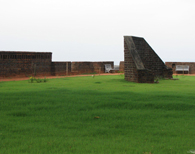
A highlight of this festival is the commemorative plaque for Gajarajan Kesavan.
Utsavam or Annual Festival: This festival is celebrated on the day of Pushya in the month of February-March and is meant for the purification and revitalizing the powers of the deity.
Saraswathy Pooja: Saraswathy Pooja is held in the last three days of the Navaratri festival as the last three days are especially meant for Goddess Saraswathy. The preparations of Krishnanattam, Kathakali, and Kalaripayattu etc. usually begin on this day. Hence this eve is celebrated with great passion.
Christmas: Christmas is one of the most important and famous festival of Kerala. It is celebrated on 25th December every year by the Christians and people belonging to other religions.
